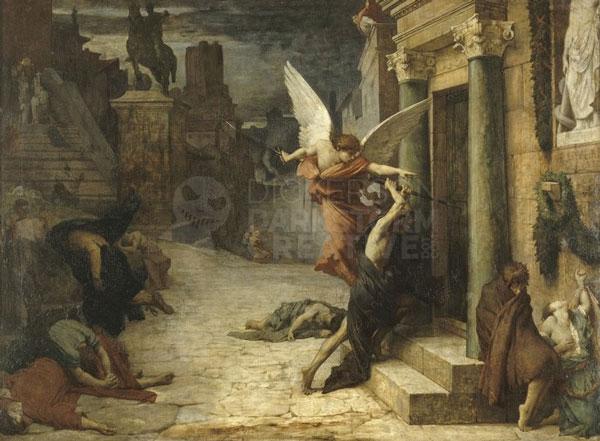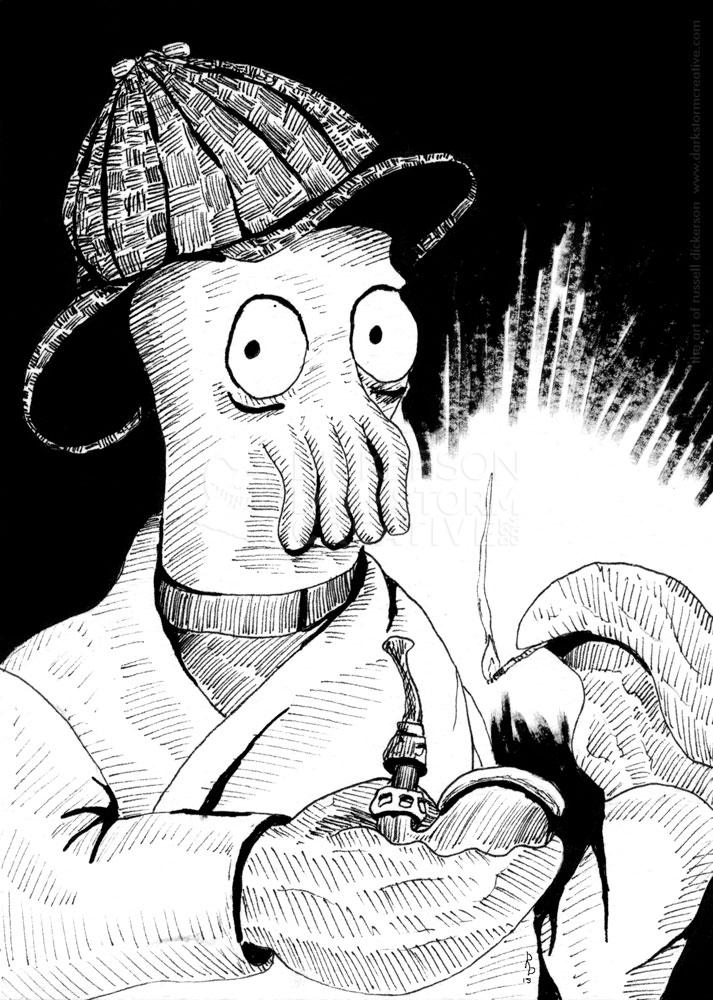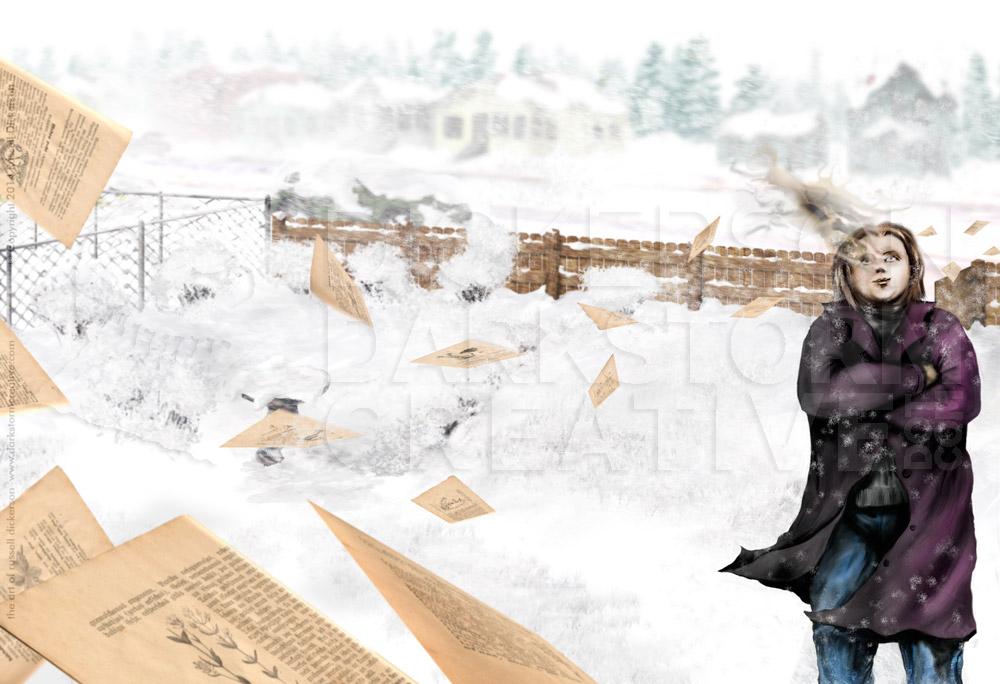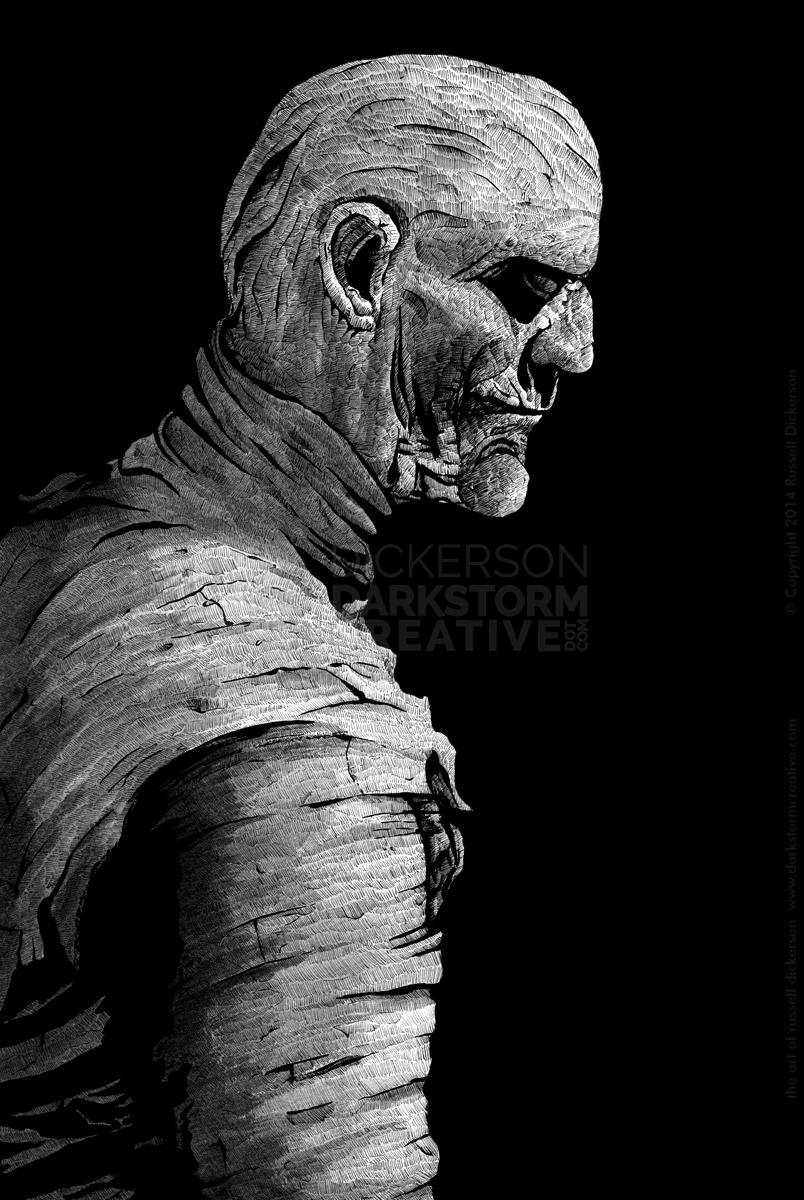I’m all about cheery pics tonight, the other two I was thinking of were pretty dark too. Something in the air maybe?
This is Jules Elie Delaunay’s Plague in Rome (1869, Oil on canvas, 52″ x 69″), also known as The Angel of Death. I might be wrong, but this isn’t the happiest of images I’ve done with these art blogs. It is, however, one of those pieces that seems to be at odds with itself.
Let’s start with the visual sense of it, especially in the contrast. The image is virtually split in half, between the light and the dark areas of the work. In this version (originally from the Musee d’Orsay), which is brighter than some of the others online (such as here), the balance isn’t quite as obvious. But it is apparent that the angels (both good and bad, seemingly) are in a far brighter area than the rest.
Delauney uses both the palette and the composition to enhance the angels. The left half of the image (and to some extent the lower right corner) has very subdued tones, and very crowded figures. The angels are much brighter, both in color and in tone, and are in a simpler, more open area of the image. Your eye is drawn to them, but you still examine the horrors of the plague in the darkness nearby.
The angels perfectly demonstrate the dynamic, almost paradoxical nature of the image. The brightness of the angel in flight, the “glory of god” come to save man. In contrast, the dark angel banging on the door, as if bringing death to all. But in their motions, the flying angel seems to be directing the dark one, ordering him to be death whether he likes it or not.
That’s where this painting starts to take on a new life. Are the angels good, removing the horror of the plague from the house within? Are they bringing light to such a dark, horrible time? Or is it the opposite, have they come to bring death to all? Are they angrily attacking, demanding to put a stop to the horrors at all costs?
The victims and others in the scene are almost torn in what they want. Some are fighting death, some seem horrified by the angels, and some are even indifferent. It’s as if the others in the scene are just as taken aback by the angels as we are.
This is what I love about the best pieces in art. Sometimes a fairly accepted image of angels, one that’s easily passed off as religious art, brings up far more ideas than originally expected. The Plague of Rome challenges the ideas of good and evil, pagans and religion, and even destiny.
Opinions?



